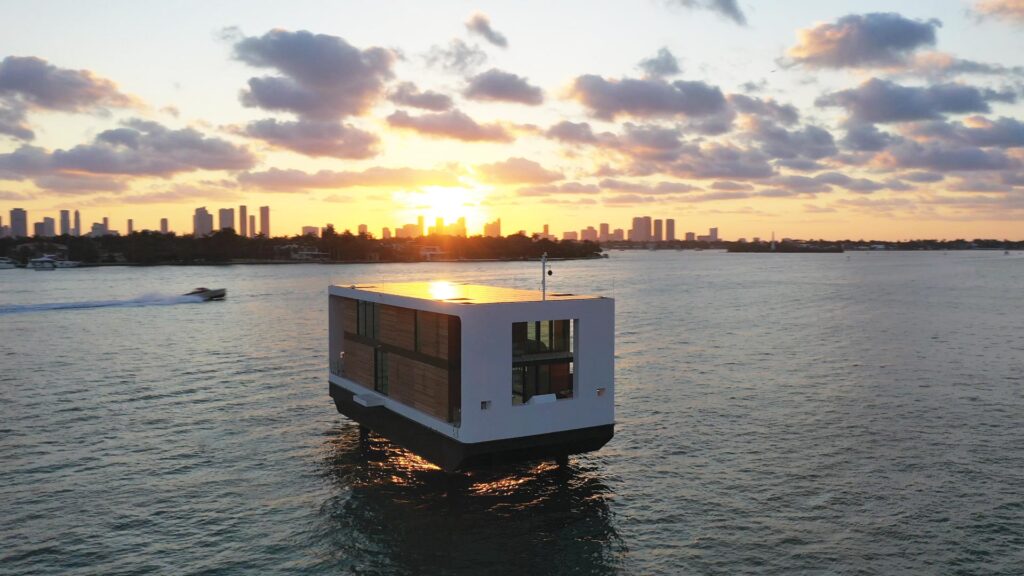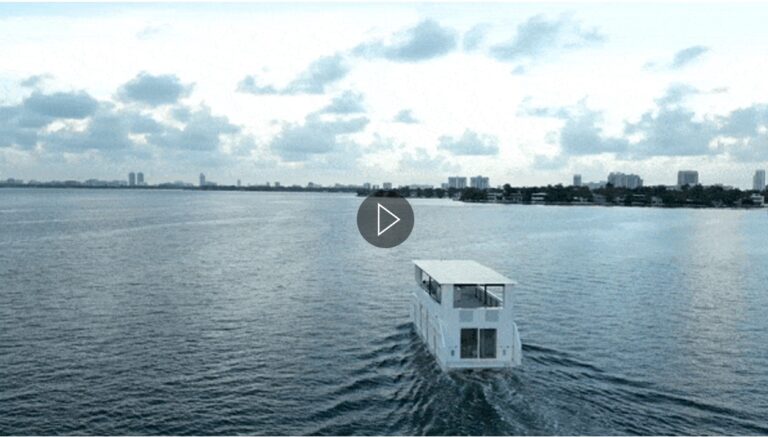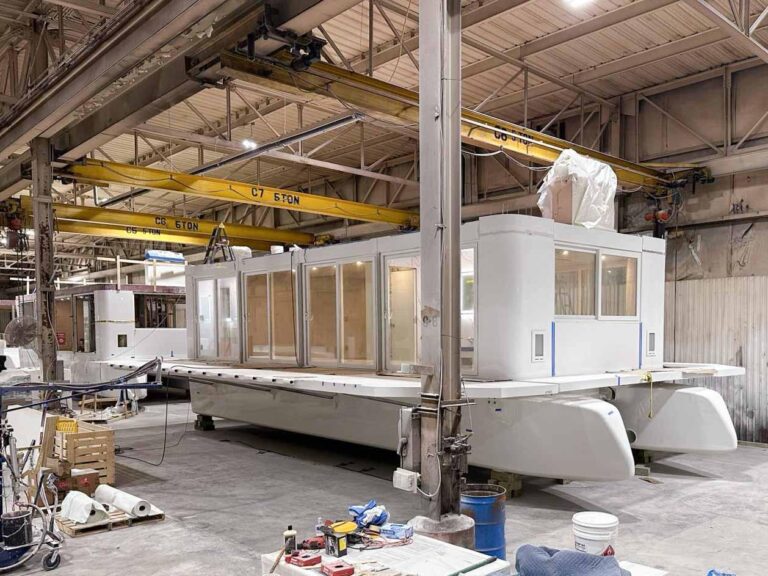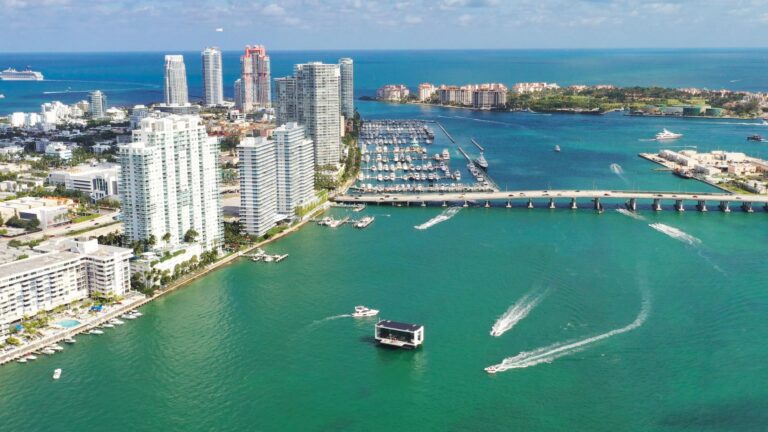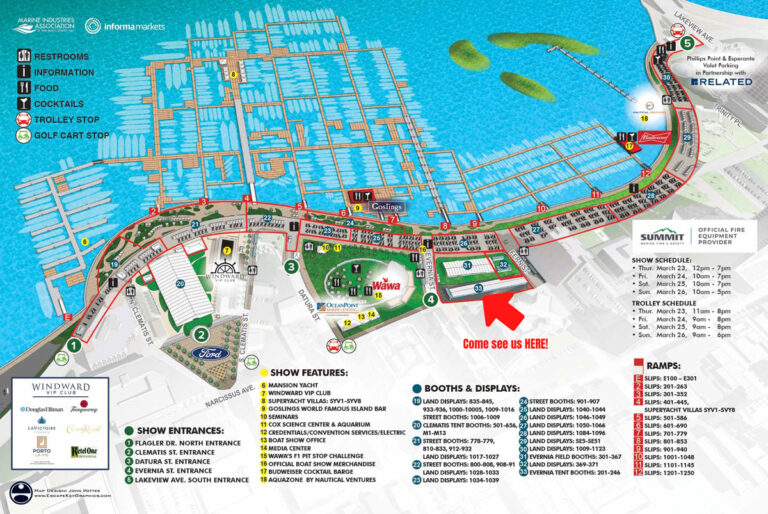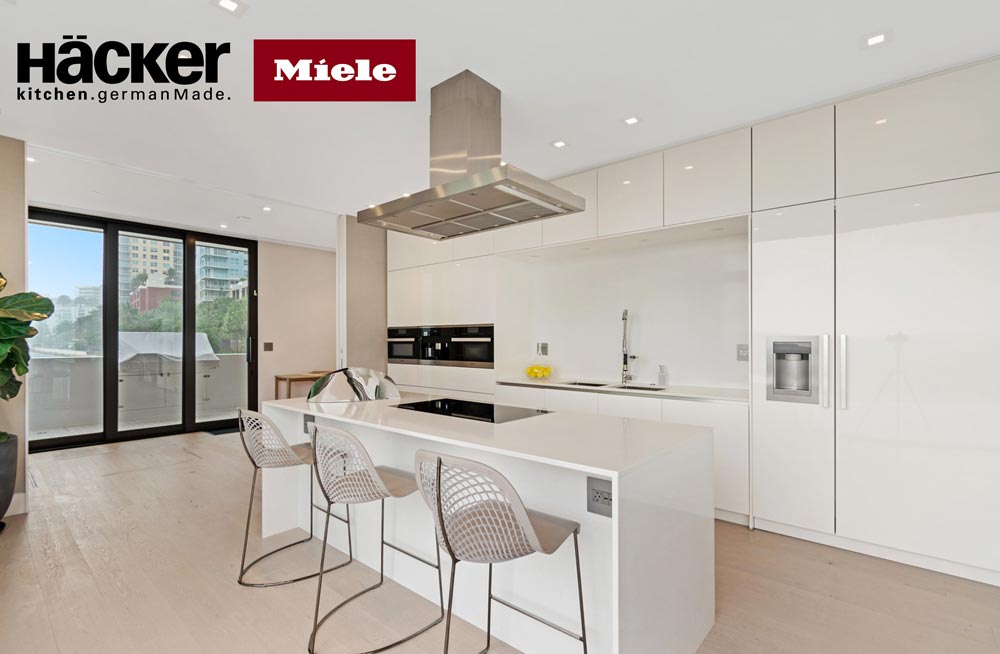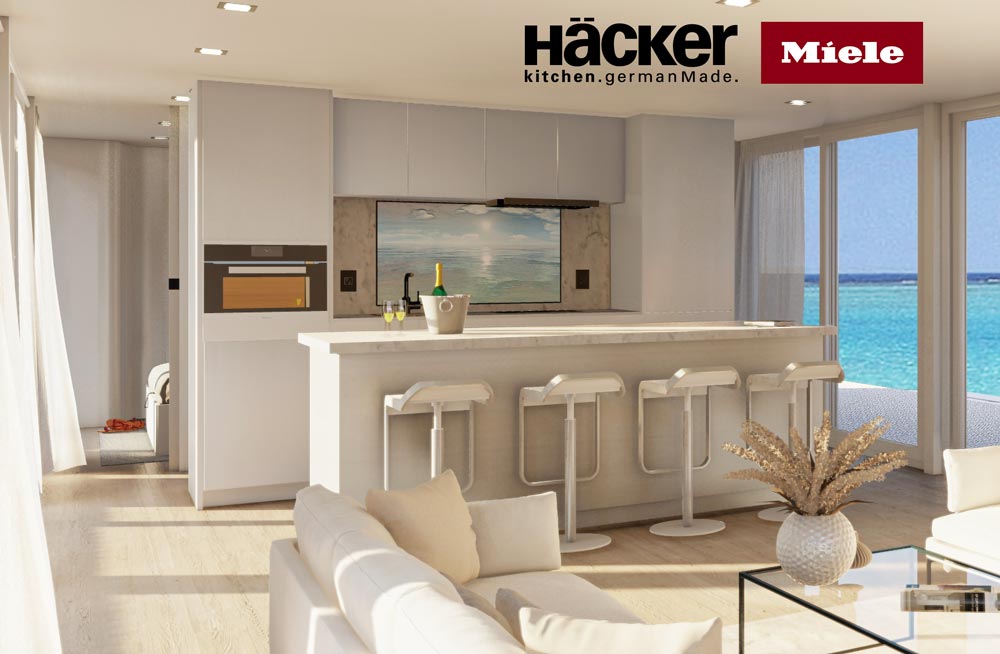Worried About Living in a Flood Zone? Try a House That Floats.
Eventually, coastal cities threatened with rising tides and bigger storms could use not just the waterfront, but also the water, as places to build housing.
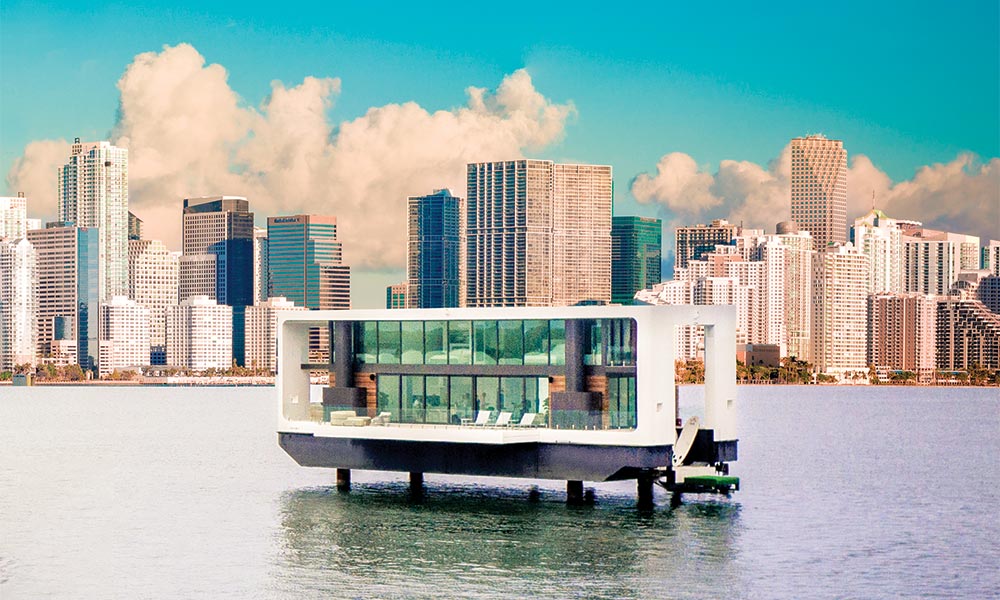
As sea levels rise, developers are eyeing the water as the next frontier, potentially mooring yachts shaped like floating homes in Biscayne Bay in Miami.
As sea levels rise and storms worsen, threatening the planet’s fragile coastlines, some architects and developers are looking to the water not as a looming threat, but as a frontier for development.
“We want to change cities worldwide, we want to see how we can push the cities into the water,” said Koen Olthuis, a Dutch architect and the founder of Waterstudio, an architectural firm that specializes in floating buildings. “I hope that in 50 years time, we look back at our cities and say, ‘Well, floating structures, they are just part of this city recipe, they make sense, they add something to it, they bring us space, cheap houses, flexible cities.’”
About 3 billion people, roughly half of the world’s population, lives within 125 miles of a coastline, according to the Population Reference Bureau. Eventually, coastal cities could claim not just the waterfront, but also the water, building in their harbors, bays, canals and rivers.
It’s already happening in the Netherlands. With a third of its land below sea level, the country has floating offices, a floating dairy farm and a floating pavilion. Floating buildings are often built atop concrete and foam pontoon foundations, allowing them to sit on the water, and rise and fall with currents.
Proponents of the design argue that these buildings protect the environment. While a 2022 study published in the Journal of Water & Climate Change found that floating structures can have a positive benefit, attracting birds to nest and providing habitat and food for sea life, the study also found that they can impact light, currents, wind patterns and water quality.
A short ferry ride from central Amsterdam is Schoonschip, a community of 30 floating houses, half of them duplexes, on a canal in a former manufacturing neighborhood. The homes, made of wood, are built atop concrete bases and connected by a jetty.
The first residents arrived in 2019, more than a decade after the neighborhood was first conceived. Maarten Remmers, 43, a film producer, paid 450,000 euros for the three-story, three-bedroom home he lives in with his girlfriend and their two children. The house feels steadier than a boat, but sways with the currents. “If it storms, you really feel it, and you see the land dancing,” he said.
The community of more than 100 people feels like a village, with shared e-bikes and cars, and a floating garden. His children, ages 7 and 9, fish and swim in the canal. “You wake up with birds, and ducks next to your window, or swans,” he said.
While Mr. Remmers looks at his community as a sustainable one — the homes have heat pumps, green roofs and are solar powered — he does not see moving his family onto the water as a solution to rising sea levels, balking at the argument that floating cities are somehow a solution to climate change. “It’s nonsense,” he said. “If the whole city is flooded, then, OK, our house will float, but there’s no reason to keep living there anymore.”
Yet, as sea levels rise, low-lying countries like the Maldives are grappling with an existential threat, and building on the water is a way to create land from the encroaching sea. The government, in partnership with the developer Dutch Docklands, is building an entire floating neighborhood in a lagoon 10 minutes by boat from Malé, the nation’s capital.
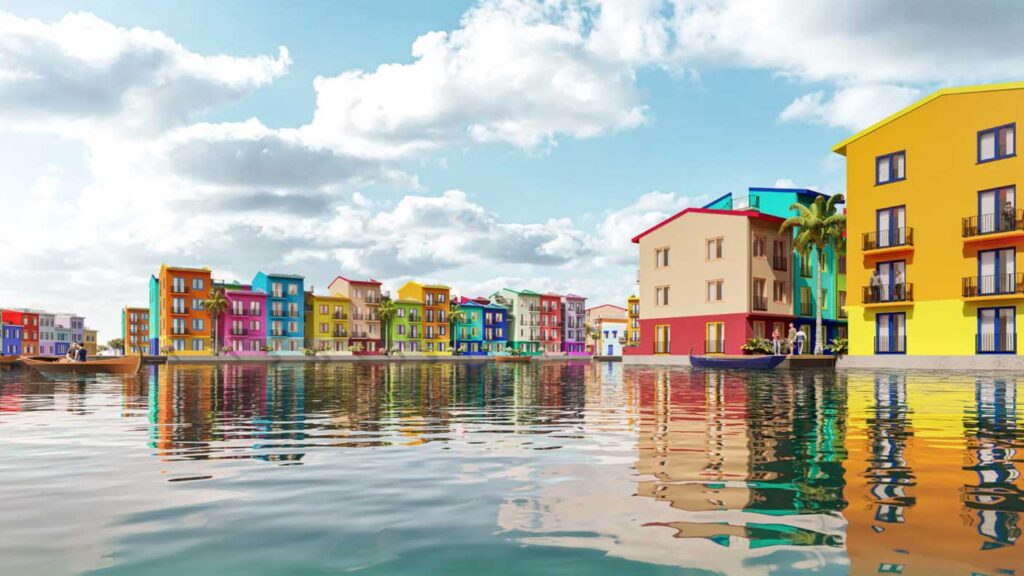
Credit: Dutch Docklands Maldives and Waterstudio
The Maldives, a country vulnerable to rising seas, is building a floating neighborhood near its capital, with apartments, schools, shops and restaurants, as shown in the rendering above.
Next year, the first phase of the 5,000-modular unit development will open — apartments, schools, shops and restaurants built on a floating landscape of serpentine jetties fitted together like Lego pieces. “That is the future,” said Mr. Olthuis, the Dutch architect, who developed the master plan for the Maldives development.
But there are bureaucratic barriers. City building and zoning codes do not address floating houses and neighborhoods built on concrete and foam foundations. Even Amsterdam, a city of known for its houseboats, was not ready for a waterborne neighborhood like Schoonschip, and it took years to navigate the bureaucracy. “There were lots of times I was totally fed up with all the legislation,” Mr. Remmers, who was involved in the development of the community, said. “It took so long.”
Cities may not be prepared for floating neighborhoods, but they are familiar with yachts. So Nicolas Derouin and Arnaud Luguet, two French engineers, designed a yacht that looked like a condo, with a flat roof and open-concept floor plan. Lower the retractable hydraulic pilings down to the ocean floor, and the boat stabilizes. In a storm, the pilings and jack-up system can lift the boat out of the water, protecting it from a storm surge. In 2019, they built their first model — the Arkup 75 — selling it for over $4 million. (The owner is living on the 75-foot boat offshore from the mansion he is building in Miami, Mr. Derouin said.)
Now Arkup has a dozen orders placed for a smaller version, the ARKUP 50, which sells for between $500,000 and $1.2 million, depending on configurations. The boats, with 660 square feet of indoor living space, and more than twice as much outdoor space, are being built in Indiana and will travel to Miami by truck.
Dock one outside a beach house and it acts as the ocean’s answer to a pool house. “It becomes an extension of their waterfront property, like a guesthouse or a family room,” Mr. Derouin said. Moor it far from shore and it is an isolated retreat. Lower the pilings and open the retractable decks of the ARKUP 50 alongside another one, and you create a network of vessels far from land where you can walk from one boat to the other. “You create a floating villa,” Mr. Derouin said. “You can really create a floating community.”
